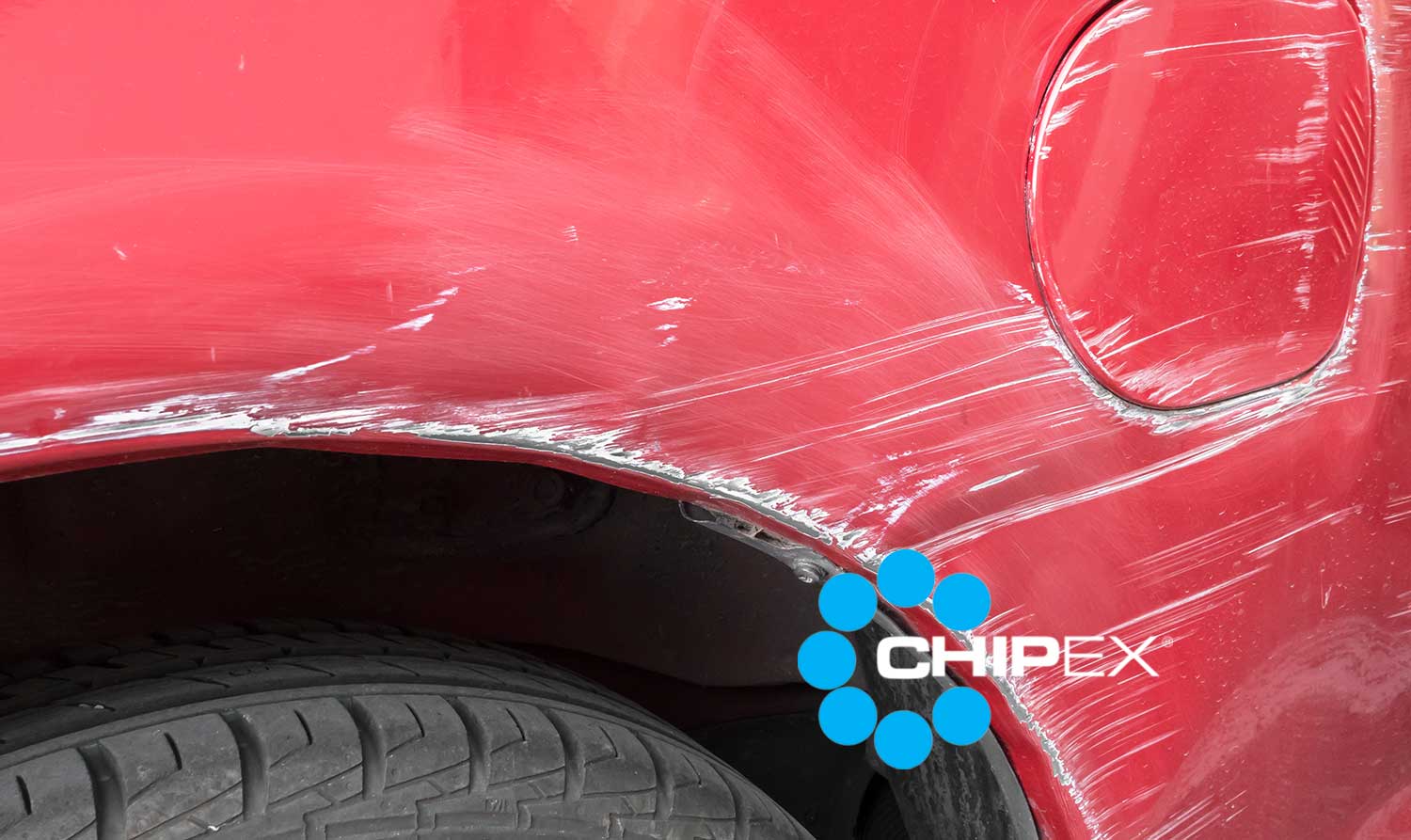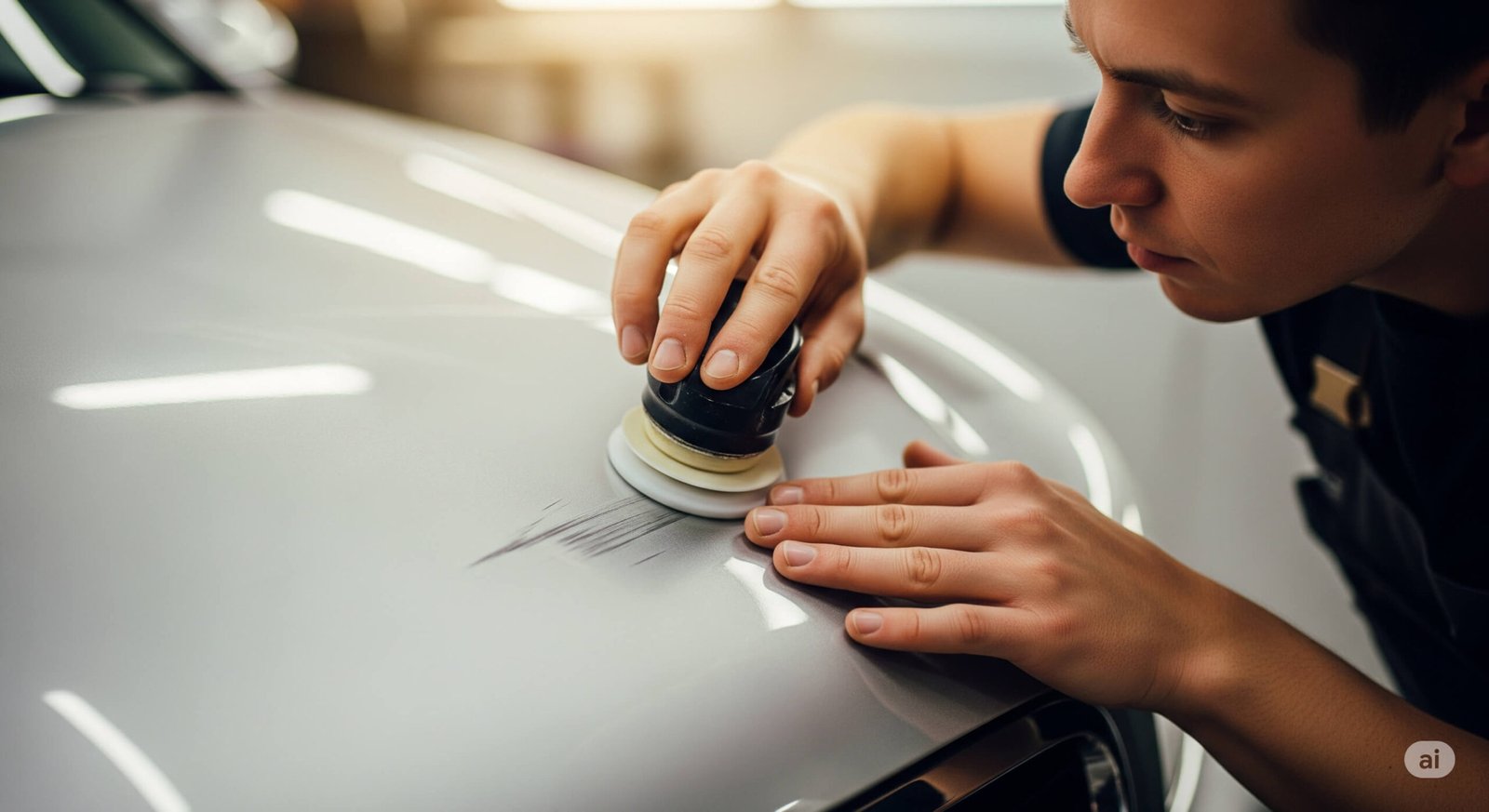Scratches on your car can be incredibly frustrating. They not only diminish your vehicle’s appearance but can also affect its resale value.
Whether it’s a minor scuff from a shopping cart or a more noticeable scrape from a rogue tree branch, you might feel like there’s no hope. But don’t worry! You have the power to restore your car’s pristine look without spending a fortune at the auto shop.
In this guide, you’ll discover simple, effective methods to remove those pesky scratches and bring back your car’s shine. Ready to transform your vehicle back to its former glory? Keep reading, and you’ll learn how to tackle this common issue with ease.

Credit: www.youtube.com
Identifying Scratch Types
Scratches on your car can be frustrating. They affect the car’s appearance. Knowing the type of scratch helps in choosing the right fix. Different scratches need different treatments. Identifying them properly saves time and effort.
Surface Level Scratches
Surface scratches are the least severe. They only affect the clear coat. These scratches do not penetrate the paint layer. They are often caused by dirt or minor abrasions. Surface scratches are easy to fix with basic tools.
Paint Layer Scratches
Paint layer scratches go deeper than the surface. They penetrate the clear coat and reach the paint. These scratches are visible and may expose the primer. They require more effort to repair. Proper techniques are needed to restore the paint.
Primer Level Scratches
Primer level scratches are more serious. They cut through the paint and reach the primer. These scratches may expose the metal beneath. They are harder to fix and need careful attention. Professional help may be necessary for a flawless finish.
Deep Scratches
Deep scratches are the most severe. They damage all layers of the car’s finish. These scratches can cause rust if not treated. Fixing them requires advanced skills and materials. Deep scratches often need professional repair services.

Credit: chipex.com
Essential Tools And Materials
Removing car scratches requires certain tools and materials. Start with a clean microfiber cloth for gentle wiping. Use scratch remover paste to buff out imperfections. Sandpaper might be needed for deeper scratches. Always finish with a quality car wax for a smooth, shiny surface.
Removing scratches from your car can feel daunting, but with the right tools and materials, it becomes a manageable task. Whether you’re a seasoned car enthusiast or a beginner, gathering the essentials can save you time and effort. You’ll be surprised how much you can achieve with a few well-chosen items.
Microfiber Cloths
Microfiber cloths are a must-have. They help prevent additional scratches while cleaning. Use them to apply polish and buff out the scratches. Always keep a few on hand; you’ll find them indispensable.
Scratch Remover
A good scratch remover can work wonders. Choose one suitable for your car’s paint type. It’s usually a simple application, but it can make a significant difference in appearance. Have you ever seen a scratch disappear right before your eyes? It’s incredibly satisfying.
Sandpaper And Sanding Block
For deeper scratches, sandpaper is essential. Use a fine grit, like 2000 or 3000, to minimize damage. A sanding block helps you apply even pressure. Remember, patience is key here. Rushing might worsen the scratch instead of improving it.
Polishing Compound
Polishing compounds bring back the shine. After sanding, apply the compound to smooth the surface. It blends the repair with the surrounding area. Polishing compounds are like magic wands for your car’s exterior.
Buffer Or Polishing Pad
A buffer can save you a lot of elbow grease. If you don’t have one, a polishing pad can be a good alternative. Both tools help achieve a professional finish. Have you ever noticed how a polished car reflects sunlight? It’s a sight to behold.
Touch-up Paint
Sometimes scratches remove paint. Touch-up paint is a quick fix. Match it carefully to your car’s color code. Applying it takes a steady hand, but the result is worth the effort.
Masking Tape
Use masking tape to protect areas you don’t want to alter. It keeps polish and paint from spreading. This simple tool ensures precision in your work. Do you want to avoid accidental mistakes? Masking tape is your friend.
Protective Gear
Safety first. Wear gloves to protect your hands from chemicals. Goggles are useful to prevent splashes in your eyes. Working safely allows you to focus on the task without worry. With these tools and materials, you’re ready to tackle most scratches on your car. Which tool do you think will make the biggest difference in your repair process?
Surface Preparation
Discover easy methods to remove scratches from your car’s surface effectively. Start with washing the car to clear dirt. Next, use a scratch removal product and a clean microfiber cloth. Gently buff the affected area to blend scratches. Finish by waxing to protect the paint.
Preparing the surface of your car is a crucial step in removing scratches effectively. It’s not just about diving straight into the buffing and polishing. Proper surface preparation ensures that you address the scratch itself and not just cover it up temporarily. A well-prepared surface can make the difference between a job well done and one that needs to be redone. Let’s dive into the essential steps of cleaning the area and assessing the scratch depth to set the stage for successful scratch removal.
Cleaning The Area
Before you can tackle any scratches, you need a clean slate. Dirt, grime, and other residues can interfere with your repair efforts. Start by washing the scratched area with car soap and water. Use a microfiber cloth to gently scrub the surface, ensuring you don’t add more scratches. Rinse thoroughly and dry the area completely. This step is crucial because even a small amount of dirt can cause more damage when you start working on the scratch. Do you have a favorite car soap that you swear by for achieving that perfect clean? Share it with us in the comments!
Assessing Scratch Depth
Not all scratches are created equal. Some might just affect the clear coat, while others could penetrate deeper layers. Gently run your fingernail across the scratch. If your nail catches, it’s a deeper scratch that might require more intensive repair. For lighter scratches that don’t catch your nail, a simple polish might suffice. Knowing the depth helps you choose the right tools and products. Have you ever misjudged a scratch and ended up with less-than-ideal results? It happens to the best of us. Proper assessment is the key to preventing such mishaps. Taking the time for proper surface preparation can save you a lot of hassle down the road. It’s the foundation of any successful scratch repair. Have you tried any unusual techniques for cleaning or assessing scratches? Let’s get the conversation going!
Using Scratch Remover Products
Scratches on your car can be annoying. They make your vehicle look worn. Using scratch remover products can help. These products are easy to find. They are also simple to use. With the right techniques, you can restore your car’s shine. Let’s explore how to choose and apply them effectively.
Choosing The Right Product
Not all scratch removers are the same. Some are for deep scratches. Others work best on light scratches. Read product labels carefully. Check online reviews for guidance. Look for products safe for your car’s paint. Consider your budget too. Quality products don’t always mean high prices. Choose a product that fits your needs.
Application Techniques
Clean the scratched area first. Use a soft cloth and soapy water. Dry the area with a clean towel. Apply a small amount of scratch remover. Use a microfiber cloth for this task. Rub in a circular motion gently. Do not press too hard. Check the scratch after a few minutes. If needed, apply more product. Wipe off any excess with a clean cloth. Repeat the process if necessary. Always follow the instructions on the product label. This ensures the best results.
Diy Scratch Removal Methods
Remove car scratches with simple DIY methods. Utilize toothpaste, baking soda, or scratch removal kits for effective results. These solutions help maintain your vehicle’s appearance without professional assistance, saving time and money.
Are those pesky scratches on your car driving you crazy? You’re not alone. Many car owners face this problem but might hesitate to spend a fortune on professional repairs. Luckily, there are effective DIY scratch removal methods that you can try. These approaches are not only budget-friendly but also surprisingly easy. Whether it’s a minor surface scratch or something deeper, you might find the perfect solution right in your bathroom cabinet or kitchen pantry.
Toothpaste Method
Toothpaste isn’t just for keeping your teeth clean; it can also help with minor car scratches. It’s a surprising trick, but it works for small surface scratches. Grab a non-gel toothpaste. Gel ones don’t have the abrasive properties needed for this task. Apply a small amount to a damp, soft cloth. Rub the toothpaste gently onto the scratch in circular motions. It’s like polishing your car with toothpaste. This abrasive action helps buff out the scratch. After a few minutes, rinse the area with water and wipe it dry. You might be amazed at how a simple item from your bathroom can restore your car’s shine.
Baking Soda Paste
Baking soda is another household item with magical properties. Known for its cleaning prowess, it can also tackle car scratches. Mix baking soda with water to form a thick paste. A ratio of 1:1 usually does the trick. Apply the paste to a clean, damp cloth and rub it onto the scratch. Similar to the toothpaste method, use circular motions for the best results. Once done, rinse and dry the area. This can effectively reduce the appearance of scratches, bringing you a step closer to a flawless finish. Have you ever wondered how many everyday items have hidden talents like these? It’s fascinating to think about the potential uses of things we often overlook. You might already have the solution to your car troubles right at home.
Professional Repair Options
Car scratches can be fixed with professional repair options. Experts use specialized tools and techniques. This approach ensures a flawless finish, restoring your car’s original look.
Dealing with scratches on your car can be frustrating. While DIY methods work for minor scratches, professional repair options are often the best choice for deeper scratches or extensive damage. Professional services offer specialized tools and expertise to ensure a perfect finish. Let’s dive into when you should consider seeking expert help and what costs you might face.
When To Seek Professional Help
You might wonder, “Do I really need professional help for this scratch?” If the scratch is deep enough to expose the metal or if it’s beyond the clear coat, it’s best to consult a professional. DIY fixes can sometimes worsen the damage if you’re dealing with complex scratches. Have you ever tried fixing a scratch yourself, only to end up with a bigger mess? Professionals have access to advanced equipment and materials that can restore your car’s appearance without risking further damage. If you’re unsure about the severity of the scratch, a quick visit to a repair shop can provide clarity.
Cost Considerations
Understanding the costs involved in professional scratch repair can help you make an informed decision. Costs can vary widely based on the depth and length of the scratch. Minor scratches might cost anywhere from $50 to $150, while larger ones can range from $150 to $300 or more. Think about your budget and the value of your car. Is it worth investing in high-quality repair to maintain your car’s resale value? Some repair shops offer packages that include paint correction and polishing, which might be a better deal than addressing each scratch individually. Have you ever hesitated to spend money on repairs only to regret it later? Weigh the pros and cons of professional services versus DIY fixes. Consider asking for quotes from different repair shops to find one that fits your budget without compromising quality.
Preventing Future Scratches
Preventing future scratches on your car is not just about maintaining its visual appeal. It’s also about preserving your investment and ensuring your vehicle remains in top condition for years. You don’t want to find yourself constantly buffing out scratches or spending money on costly repairs. Let’s explore some practical steps you can take to protect your car from unwanted blemishes.
Protective Coatings
Adding a protective coating can be a game-changer. These coatings, like ceramic or wax, form a barrier between your car’s paint and the elements. They help resist scratches, dirt, and even harmful UV rays. This might seem like an extra expense, but consider the long-term savings on repair costs.
Think of it as a shield for your car. A friend of mine swears by ceramic coatings and hasn’t seen a scratch in years. It’s worth asking yourself: could this be the solution you need? Applying a protective coat every few months ensures your car stays scratch-free and shines beautifully.
Safe Parking Practices
Where you park plays a massive role in scratch prevention. Avoid tight spaces where other vehicles might bump into yours. Choose spots away from shopping carts or areas prone to heavy pedestrian traffic. Even when parking at home, ensure there’s enough space around your car.
Ever noticed how crowded parking lots can lead to dents and scratches? By simply opting for a spot further away, you might save yourself the trouble of dealing with unexpected blemishes. It’s a small change with significant benefits.
Implementing these practices can make a big difference. Which preventive measure will you start using today to keep your car looking pristine?

Credit: m.youtube.com
Frequently Asked Questions
How Can I Remove Light Car Scratches?
To remove light scratches, clean the area with soapy water. Dry thoroughly, then apply a scratch removal product. Use a soft cloth to buff in a circular motion until the scratch fades. Repeat if necessary for best results.
Do Toothpaste Remove Car Scratches Effectively?
Toothpaste can remove minor surface scratches. Apply a small amount to a damp cloth. Gently rub the scratch in circular motions. Rinse with water and dry. It works by slightly polishing the top layer of paint.
What Household Items Can Fix Car Scratches?
Household items like toothpaste, baking soda, or nail polish can help. Use these for minor scratches. Apply the product with a soft cloth, rubbing gently in circular motions. Always test on a small area first.
Can I Prevent Car Scratches From Occurring?
Prevent scratches by parking away from other vehicles. Use car covers and wash your car regularly. Avoid abrasive cleaning tools and keep your car waxed. Regular maintenance can help protect the paintwork from minor scratches.
Conclusion
Removing car scratches is simpler than you might think. Basic tools help restore your car’s shine. Regular checks prevent deeper damage. Easy steps save time and money. Your car looks new with minimal effort. Address scratches early for best results.
A scratch-free car boosts your pride and its value. Enjoy driving without the worry of unsightly marks. Remember, patience leads to a perfect finish. Keep your car beautiful with these simple tips. Happy driving with a scratch-free vehicle!

